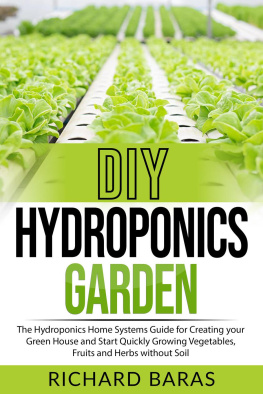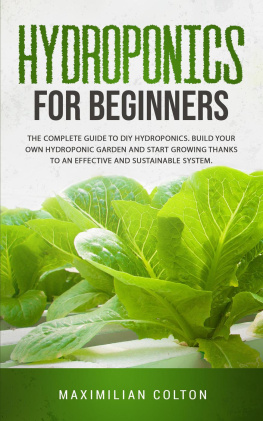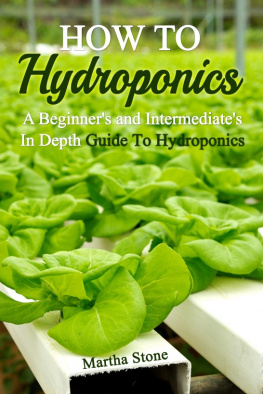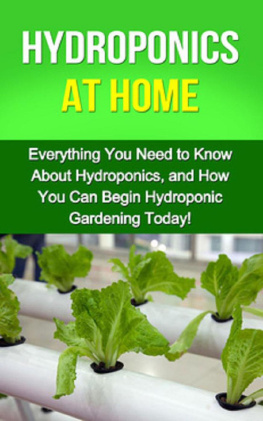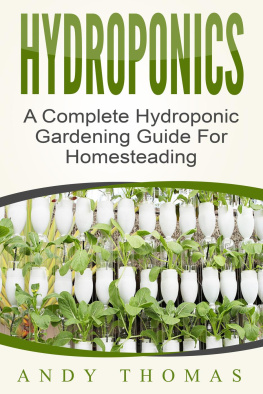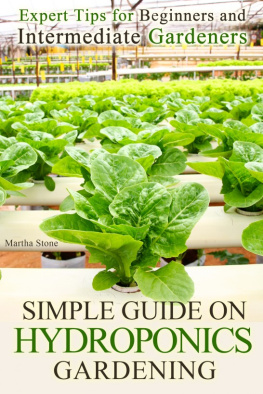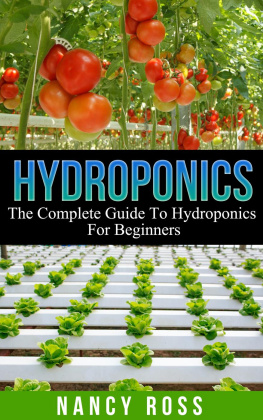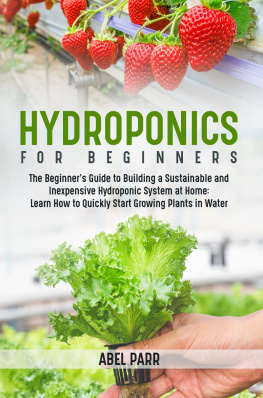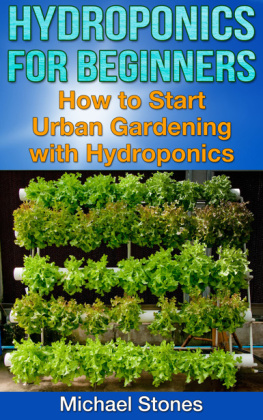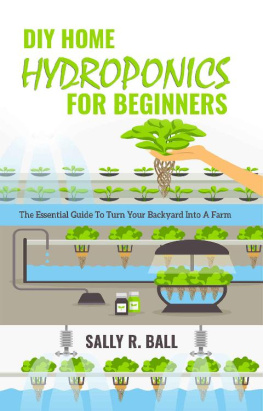Hydroponics Mastery:
3 books in 1
Hydroponics For Beginners + Hydroponics Garden + Hydroponics.
The guide to boost your gardening skills and build your own thriving home garden without anxiety.
By:
Jamie Backyard
Copyright 2020 Jamie Backyard. All rights reserved.
The content contained within this book may not be reproduced, duplicated or transmitted without direct written permission from the author or the publisher.
Under no circumstances will any blame or legal responsibility be held against the publisher, or author, for any damages, reparation, or monetary loss due to the information contained within this book. Either directly or indirectly.
Legal Notice:
This book is copyright protected. This book is only for personal use. You cannot amend, distribute, sell, use, quote or paraphrase any part, or the content within this book, without the consent of the author or publisher.
Disclaimer Notice:
Please note the information contained within this document is for educational and entertainment purposes only. All effort has been executed to present accurate, up to date, and reliable, complete information. No warranties of any kind are declared or implied. Readers acknowledge that the author is not engaging in the rendering of legal, financial, medical or professional advice. The content within this book has been derived from various sources. Please consult a licensed professional before attempting any techniques outlined in this book. By reading this document, the reader agrees that under no circumstances is the author responsible for any losses, direct or indirect, which are incurred as a result of the use of information contained within this document, including, but not limited to, errors, omissions, or inaccuracies.
THIS BOOK INCLUDES
BOOK 1:
HYDROPONICS FOR BEGINNERS
A Starters Guide For Learning The Basics Of Hydroponics And Set Up A Profitable System In Your Garden. How To Grow Fruits And Vegetables At Home All-Year-Round
BOOK 2:
HYDROPONIC GARDEN
Discover How To Build An Inexpensive Garden At Home Even If You Are A Beginner. The Ultimate Diy Hydroponics System For Homegrown Organic Fruit, Herbs And Vegetables
BOOK 3:
HYDROPONICS
A Step-By-Step Guide To Grow Plants In Your Greenhouse Garden. Discover The Secrets Of Hydroponics And Build An Inexpensive System At Home For Growing Herbs And Vegetables All-Year-Round
Hydroponics for Beginners
A Starters Guide for Learning the Basics of Hydroponics and Set Up a Profitable System in Your Garden. How to Grow Fruits and Vegetables at Home All-Year-Round
By:
Jamie Backyard
TABLE OF CONTENTS
Introduction
W hen we think of gardening, what we often see in our heads is a man or a woman on all fours crouched over a plot of dirt. They dig a hole, place in a seed or even a whole plant which they have bought, close it up and there you go. Or maybe we think of gardening in line with farming and we picture the same thing, only this time there isnt someone crouched down but a series of mechanical inventions that do all that busy work for them. We almost certainly dont think of an indoor setup, as that is more in line with hanging plants and decorative greens than it is with the concept of gardening. This would suggest that our main identifier which separates gardening from owning a few plants is the dirt itself, the soil which is part of Mother Earth. But the facts are quite different.
There are many different ways of gardening. The classic flowerbed in the front yard is just one of them. Here well be looking at another of them: Hydroponics. To say hydroponics is a new fad in the gardening world would discredit its history which reaches all the way back to the hanging gardens of Babylon and the Aztecs floating gardens. There are even Egyptian hieroglyphs which describe a form of hydroponic. More recently, hydroponics was even given a place within NASAs space program. Clearly, this is not a new fad. But commercial growers and scientists are coming around to the method, leading to more hydroponic setups being used and more research looking into the advantages of hydroponics.
So, what makes hydroponic gardening different than traditional gardening? As the name implies (hydro) water plays a key role. The hydroponic garden actually doesnt make use of soil. Instead, hydroponic gardens make use of nutrient-based solutions through the circulation of water. So, a hydroponic garden tosses out the soil and instead uses an inert grow medium like clay pellets, vermiculite, perlite or one of several others that will pop up throughout this book. What this does is let the roots of the plant directly touch the nutrient solution, get more oxygen as theyre not buried in the ground, and together these both promote growth.
The growth that this promotes can be quite astounding. A hydroponic setup, if managed properly, can actually see your plants maturing up to 25% faster than in typical soil gardening. Not only that but those plants that grow 25% faster might also yield up to 30% more as well! This is because the plants dont need to work as hard to get nutrients in a hydroponic setup as they would in a more traditional one. Basically, with the roots getting everything they need to provide the plant with nutrients, the plant can focus on growing its top part rather than having to grow out its roots for sustenance.
But there are even more benefits to using a hydroponic setup than just expedient plant development. Despite the fact that hydro is in the name, hydroponic gardens actually use up less water than traditional soil-based gardens do. This is because the hydroponic system is an enclosed system. This means that there is less soil runoff, evaporation or wastewater in a hydroponic setup. Therefore, a hydroponic garden, when properly set up and maintained, will produce bigger plants at a faster rate with less environmental strain. It seems win-win-win, all around.
However, there are some slight disadvantages to hydroponic gardens over traditional soil-based gardens. The biggest and most obvious of these disadvantages is that a hydroponic garden will cost more to set up than a soil garden, regardless of size. With a soil garden, all you have to do is dig a hole, put in the plant or seed and then water it from time to time. This doesnt mean that you will have a healthy and well-functioning garden but it is pretty easy to get going. A hydroponic garden requires time and money to set up, especially if youve never set one up before. Plus, if you dont manage your hydroponic setup then it isnt very likely that it will keep those plants alive. Maintenance is super important here, thats why theres a whole chapter devoted to it later on. There are many different kinds of hydroponic gardens we can set up and some actually have more risks than others. For example, a setup that uses a pump (such as an ebb & flow system) can see that pump clog if not cared for properly and a clogged pump could see all your plants dead as result.
It should be noted that we are focused on hydroponic gardening which, despite the similarity in name, is not the same as aquaponic gardening. Aquaponic gardening is, in fact, a mixture of hydroponics with the growing and raising of fish. Basically, aquaponics is a hydroponic garden setup in which fish are introduced into the system. These fish create waste in the water which helps to give nutrients to the plants. The vegetables in the aquaponic garden, in return, clean the water for the fish. In this way, the aquaponic garden provides for both the fish that are being raised and the plants that are being grown. Aquaponic gardening is a great way of growing and raising food with an eye to sustainability. However, aquaponics gardening is beyond the scope of this specific book.


